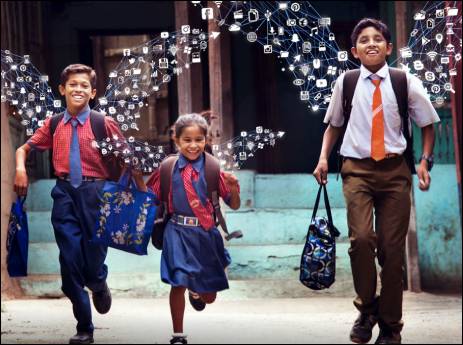
January 29 2021: Omidyar Network India, an investment firm focussed on social impact recently launched its refreshed investment thesis titled ‘Next Half Billion: The Next Frontiers’.
The report indicates that it is in fact possible to build large and valuable businesses serving the NHB to help create a more inclusive and meaningful digital experience for them while outlining key trends and recommendations for the entrepreneurs serving this segment.
We bring you the executive summary of the report:
The Next Half Billion (NHB) refers to the nearly 500 million Indians who will come online for the first time by 2022, and predominantly from the bottom 60% of India’s income distribution. Our investment thesis postulated that internet and mobile phones could unlock greater incomes, opportunities and choices for the NHB through new tech-led business models. Five years since we began focusing on this segment, this paper takes stock of how our thesis is playing out and how NHB-focused business models have evolved. It also anticipates the next frontiers in the NHB’s digital journey and the opportunities for entrepreneurs serving them.
Significant progress in addressing barriers in the NHB’s digital journey, though much remains to be done
Expansion of internet and mobile services, public digital infrastructure and entrepreneurial innovations have spurred an increase in both the quantum and range of uses of the internet. Covid-19 significantly accelerated this trend.
Affordable access to data: Good progress …Low data costs, due to the advent of Jio
Availability of Indian language content: Getting better Local language content proliferating; video becoming the dominant mode of content consumption
Local apps for social/entertainment: Start made...more to be done Local apps competing with international ones
Design for extreme affordability: Progress made... needs to be more ingrained Frugal innovation has enabled affordable offerings
Low confidence in transacting online: Progress made… needs to be more ingrained Online social communities, simple payment mechanisms and vernacular language are increasing trust
Low rates of internet access amongst women: Progress made.. more to be done Women’s use of mobiles and women-centric digital platforms seeing traction
Adapting UI/UX to the NHB’s context: Getting better.. Use of relatable language and inclusive user interface/experience (UI/UX)
“Utilitarian” sectors have taken centre-stage in serving the NHB Next frontiers for NHB business models will see deepening of “utilitarian” sectors “Utilitarian” sectors have gained momentum as the NHB became more comfortable with accessing various services on the internet. Business models in each of these sectors have evolved alongside the NHB’s digital journey:
Education: from brick-and-mortar to online; from asynchronous to live learning
from eliminating intermediaries to serving the entire value chain
Health-tech: from health content to community, medical advice and commerce Financial Inclusion: from consumer credit to their financial health; early stages of inclusive solutions for small businesses Mobility: from travel information to ride sharing and intra-city mobility
Small and Medium Enterprise digital solutions: from bringing small businesses online to embedded solutions
Next frontiers for NHB business models will see deepening of “utilitarian” sectors
The digital journey of the NHB will continue to accelerate post-Covid-19.
The constrained income growth of the NHB will require frugality and patience, as monetisation may be slow post-Covid.
Entrepreneurs will have to push the bar on addressing barriers in the NHB’s digital journey, such as addressing language barriers, contextualising models for the NHB and increasing women’s participation.
Focus on essential services and products will be accentuated; shifts towards the more aspirational areas will be slower than previously anticipated.
The full report can be read here,